A Quick & Easy 8 Step FormulaWait! Before you start reading this blog, if you have NOT chosen your goal areas yet, read THIS blog first! Special Education Teachers love their jobs, right? Sure! We love working with students with disabilities, getting to teach them and watch them grow and achieve from our instruction. That is the best part of the job. But... we don't always love the paperwork. Do you do everything you can to avoid writing IEP goals? Copy papers... Offer to cover someone's recess duty... Actually take that bathroom break... Special Education Teachers will do anything we can to avoid the paperwork part. And we all dread it. Special education teachers groan and mumble that they have to go do it as they procrastinate by chatting with a fellow educator. Writing an IEP can feel downright overwhelming. But this does not have to be the way! IEP goal writing does not have to be stressful. It's actually quite simple once you get the hang of it - oh, and you obviously have the ever-important, all-knowing data! But that's easy for me to say as I sit here writing this blog and not an IEP. Confession time - I don't actually ever dread writing an IEP, and that is because I use my super simple SMART IEP Goal Formula. Today, I am going to share with you this simple formula that will forever change the way you feel about writing IEP goals and objectives. After reading these steps and applying this formula to your own goal writing, I can promise that you will start saying how easy goal writing is. And when other Special Educators are jealous of you, send them my way! STEP ONE - Identify the goal areasStart with the BIG picture! What is the student's qualifying disability? Students qualify for Special Education services when they have a qualifying educational disability that impacts the student's ability to effectively make progress without the student receiving Specially Designed Instruction and/or related services like Speech or Occupational Therapy. Under IDEA, or AKA the Special Education law, there are 13 educational disability categories: -Specific Learning Disability -autism -deaf-blindness -deafness -emotional disturbance -hearing impairment -intellectual disability -multiple disabilities -orthopedic impairment -other health impairment -speech or language impairment -traumatic brain injury -visual impairment (Note: States can choose how they want to assign disability categories, as long as they cover all of the federal disability terms and definitions. You should check with your state mandates for their educational disability areas.) Once you have identified the educational disability that is impacting the ability of the student to make effective progress in the general education classroom, you must then ask the next question - What impact does the disability (or disabilities in some cases) have on the education of the student? The skill areas that you identify are most likely to be the goal areas. Let me explain! For example, let's say a student has been identified with a Specific Learning Disability in Reading. Specifically, the student's decoding skills are about 2 years below grade level. This causes the student to be unable to read grade level materials across all content areas. Evaluations have shown that the phonemic awareness and phonics skills of the student are lagging. While the student was unable to read grade level expectations on evaluations, the student demonstrated strong reading comprehension skills at their independent reading level. The student also has strong listening comprehension skills. However, we just said that the student cannot read grade level material because of their educational disability. So does this mean that the student needs a goal for Mathematics or Social Studies or Science? The simple answer here (based on our example) is no. The better question here is - can an accommodation be put in place to remove the hurdles of the curriculum for a student, allowing the student to independently access the grade level material? In looking at the example I gave you, the lagging skills of my fake student are in phonemic awareness and phonics. An accommodation of text to speech or access to audiobooks would allow the student to “read” the grade level material - independently! So, for this student, the goal areas would be phonemic awareness and phonics skills. You can read more about how I choose my goal areas HERE! Make sense? Okay, so our next step is to write the goal! For this step we will use the SMART acronym: SMART = Specific, Measurable, Achievable, Results-Oriented, Time-Bound SMART is a well-established mnemonic acronym that we can use to plan and achieve all kinds of goals, including IEP goals. STEP TWO - SMART = SpecificSpecifically, what does the student need to achieve in order to improve the identified lagging skill areas? First, think BIG, and then, narrow it down to the specific skill that is required! Look at that qualifying educational disability again. How is the disability impacting the ability of the student to access the general education curriculum? What standards or skills are required? Look at the student's current abilities - or present levels of data. What are the steps needed to achieve the grade level standards? What are the lagging skills needed to achieve the grade level standards? This will be your goal or goal areas! Remember our student example? We already identified the goal areas of phonemic awareness and phonics. For our purposes, we will just write the phonics goal. Here is the current performance of our student example: -Zoe is at a 2.5 grade level. This is her annual review. At this meeting, we will be writing her IEP for one year from now. -Zoe's score on the DIBELS subtest Nonsense Word Fluency (NWF), Words Recoded Correctly, was a score of 23, placing her in the strategic support range. -Zoe is able to read grade level high frequency words, based upon the Fry Sight Word Lists, with 95 percent accuracy. -On the Quick Phonics Screener, Zoe fell in the late first to early second grade level. Areas of weakness included words containing v-e syllables, words containing stable final syllables (i.e. /tion/, /ture/), and words containing long vowel teams (i.e. /ea/, /ai/) When IEP goals are Specific, they target the individual student's needs in the academic content areas and functional performance areas. These goals should be specific in their descriptions of the knowledge and skills that will be taught to the student and achieved by the student. SMART IEP Goal Step 2: Zoe will achieve grade level performance in the area of phonics. STEP THREE - SMART = MeasurableHow will progress toward the goal be measured? If my goal was that Zoe will improve her phonics skills, how will I know that she has improved? What curriculum-based measures will you utilize to assess progress towards the goals? This is one of the many reasons why progress monitoring is SO important. With continual progress monitoring, educators are able to pinpoint areas of weakness that are hindering progress towards goals. Once lagging skills have been identified, instruction can be provided to target those skills. With continued progress monitoring, it is the hope that each lagging skill will become an independently applied skill, and with each gained skill, a student will be one step closer to his/her goal. In our example, we expect Zoe to achieve grade level accuracy in the area of phonics. We know that she is currently not achieving this based upon her current performance: -Zoe's score on the DIBELS subtest Nonsense Word Fluency (NWF), Words Recoded Correctly, was a score of 23, placing her in the strategic support range. So when we look at what we expect Zoe to be able to achieve - achieve grade level accuracy in the area of phonics - we must ask ourselves how we will know that she has achieved this, or what measurement can we use to know that Zoe has achieved this goal? When we look at Zoe's current performance she achieved a score of 23 on the DIBELS subtest Nonsense Word Fluency (NWF), Words Recoded Correctly. DIBELS is a reliable measurement tool so why reinvent the wheel? But now how do we know when Zoe has achieved grade level performance in phonics based on this measurement? We can use the measurement tools benchmarks! Most assessments already have these benchmarks set, and many of them have grade level equivalents. SMART IEP Goal Step 3: Zoe will achieve a score of 40 (or greater) on the DIBELS subtest measure(s) of Nonsense Word Fluency (NWF), Words Recoded Correctly. STEP FOUR - SMART = AchievableThis is our halfway mark in writing the goal. So this is where we need to pause and do some checking in. Does this goal represent progress that is realistic for this student to make? So, here is our goal so far: Zoe will achieve a score of 40 (or greater) on the DIBELS subtest measure(s) of Nonsense Word Fluency (NWF), Words Recoded Correctly. In order to make sure this is a realistic goal for Zoe to be able to achieve, I want to first check in on her cognitive capacity - does Zoe have the cognitive ability to achieve this goal? Your school psychologist can help you with this if needed. Once I know that Zoe's cognitive profile does not inhibit her from making expected progress, I will need to determine how many steps Zoe will need to take from her current performance to achieve this goal. To do this, we review our current performance once again! In Zoe's case, an error analysis on her DIBELS and other assessments such as the Quick Phonic Screener will give us information on what is holding Zoe back from meeting grade level expectations. I would suggest looking at the 3 most recent assessments to see which errors are consistent across evaluations and holding her back. I will then compare the identified errors with a scope and sequence of instructional skills. For example, let's say my school uses the Fundations curriculum for phonics. I would look at Zoe's errors in comparison to this scope and sequence. What I would be looking for here is whether Zoe's identified errors will get her to the goal we set. During this process, I make a list of the steps that the student will need to make in order to achieve the goal. Think of these as expected benchmarks along the path to achievement of the goal. Lastly, I will return to the benchmark expectations of DIBELS. If Zoe's current performance score is a 23 on the subtest Nonsense Word Fluency (NWF), Words Recoded Correctly, will deliberate and explicit instruction of the identified errors result in Zoe achieving this goal? If yes, then we are good! If no, then, we may need to adjust our goal, but first, we should ask some questions. While Zoe's cognitive profile may not have shown any major red flags for not being able to achieve this goal, that does not mean that she does not need any accommodations to achieve it though! We want to specify under what conditions we will expect Zoe to achieve these results. Think - are there any hurdles to the curriculum goal that we would need to remove and replace with the assistance so Zoe is able to meet this goal? Think - in what context or setting will the skill be measured? Will Zoe participate in a small group? Will Zoe be provided staff support in the general education classroom for this goal? AND/OR What supports (if any) does the student need to achieve this goal? What supports will the student need to transition to independently accessing the general education grade level curriculum? Does the student need a graphic organizer? Adult support? Cues? In order to get Zoe closer to grade level, she will receive specialized instruction of lagging skills and strategies, increasing her ability to independently access the general education curriculum. Skill and strategy instruction will be required for Zoe to close the achievement gap AND learn how to function independently and successfully with Zoe's disability. By the end of this process, you will have a list of steps that the student will need to take in order to achieve this goal. Don't throw this list away! SMART IEP Goal Step 4: Given direct instruction in a small group, Zoe will achieve a score of 40 (or greater) on the DIBELS subtest measure(s) of Nonsense Word Fluency (NWF), Words Recoded Correctly. STEP FIVE - SMART = Results-OrientedWhat results do you expect the student to demonstrate to know mastery has been achieved? IEP SMART goals should be results-oriented. We already determined a reliable and valid measurement tool. But let's say that Zoe meets her goal of a score of 40 on the DIBELS subtest measure(s) of Nonsense Word Fluency (NWF), Words Recoded Correctly on Monday in September. That is awesome! Yay for Zoe! But do we just call a TEAM meeting for Tuesday to discuss Zoe meeting the goal? Well, not exactly. What accuracy toward the goal will be needed to demonstrate mastery? And does one time meeting this accuracy mean that the student has met the goal and is ready to move on? Our IEP SMART goal should be Results-Oriented in that it is focused on results and making sure those results stick! Our goal should ensure that the student met mastery of the identified goal. To make sure that our data is reliable and results-oriented, we can assess students multiple times. Consecutive (3 or more) administrations of the evaluation that yield the same (or greater) results are reliable and results-oriented. Important Note: IEP goals are not based on district curricula, state or district tests, or other external standards but rather, they are individualized for the specific needs of the student. IEP goals are not based on district curricula, state or district tests, or other external standards but rather, they are individualized for the specific needs of the student. SMART IEP Goal Step 5: Given direct instruction in a small group, Zoe will achieve a score of 40 (or greater) on the DIBELS subtest measure(s) of Nonsense Word Fluency (NWF), Words Recoded Correctly, on at least 3 or more consecutive administrations of the assessment. STEP SIX - SMART = Time-BoundEvery goal needs a target date. This gives us a deadline, which helps us to focus on priorities. A Time-Bound IEP SMART goal is one that has a defined beginning and end. In what timeframe, will the student achieve this goal? Remember that this timeframe also needs to be realistic for the student. IEPs are typically written for a one year time period So 'by the end of the IEP cycle' is typically the answer to this question. If the IEP start date is going to be 4/1/2040, then, the goal can be set to be achieved by 4/1/2041. SMART IEP Goal Step 6: By the end of the IEP period, given direct instruction in a small group, Zoe will achieve a score of 40 (or greater) on the DIBELS subtest measure(s) of Nonsense Word Fluency (NWF), Words Recoded Correctly, on at least 3 or more consecutive administrations of the assessment. STEP SEVEN - Complete the IEP Goal Sentence FrameHere is the evolution of our own example SMART goal: S - Zoe will achieve grade level performance in the area of phonics. M - Zoe will achieve a score of 40 (or greater) on the DIBELS subtest measure(s) of Nonsense Word Fluency (NWF), Words Recoded Correctly. A - Given direct instruction in a small group, Zoe will achieve a score of 40 (or greater) on the DIBELS subtest measure(s) of Nonsense Word Fluency (NWF), Words Recoded Correctly. R - Given direct instruction in a small group, Zoe will achieve a score of 40 (or greater) on the DIBELS subtest measure(s) of Nonsense Word Fluency (NWF), Words Recoded Correctly, on at least 3 or more consecutive administrations of the assessment. T - By the end of the IEP period, given direct instruction in a small group, Zoe will achieve a score of 40 (or greater) on the DIBELS subtest measure(s) of Nonsense Word Fluency (NWF), Words Recoded Correctly, on at least 3 or more consecutive administrations of the assessment. For our purposes today, I have created a goal that make sense in a sentence as we have been adding each step. But here are a few sentence frames options for SMART IEP goals: SMART IEP Sentence Frame #1:SMART IEP Goal Step Seven Example: Zoe will improve her phonics skills by achieving a score of 40 (or greater) on the DIBELS subtest measure(s) of Nonsense Word Fluency (NWF), Words Recoded Correctly, given direct instruction in a small group, on at least 3 or more consecutive administrations of the assessment by the end of the IEP period. SMART IEP Sentence Frame #2:SMART IEP Goal Step Seven Example: By the end of the IEP period, Zoe will achieve a score of 40 (or greater) in a small group setting as measured by the DIBELS subtest measure(s) of Nonsense Word Fluency (NWF), Words Recoded Correctly, on at least 3 or more consecutive administrations of the assessment and given direct instruction SMART IEP Sentence Frame #3:SMART IEP Goal Step Seven Example: By the end of the IEP period, given direct instruction in a small group, Zoe will achieve a score of 40 (or greater) as measured by the DIBELS subtest measure(s) of Nonsense Word Fluency (NWF), Words Recoded Correctly and on at least 3 or more consecutive administrations of the assessment. STEP EIGHT - Write the benchmark objectivesNow, it's time to write the objectives! Think of the objectives as the stepping stones needed to achieve the goal! What specific skills are required for the student to achieve the goal? Hold up, wait a minute. Do you remember reading something very similar a few minutes ago? Well, you did! Remember that list that I said not to throw away in Step 4? Those are your objectives! Look at what Zoe needs to be able to achieve, based upon her current performance, to be able to achieve the goal we wrote: -Zoe will be able to decode words containing v-e syllables with 80 percent accuracy. -Zoe will be able to decode words containing stable final syllables (i.e. /tion/, /ture/) with 80 percent accuracy. -Zoe will be able to decode words containing long vowel teams (i.e. /ea/, /ai/) with 80 percent accuracy. Ta Da! And there you have it! An IEP SMART goal with SMART objectives that were a cinch to write! SMART IEP Goal: By the end of the IEP period, given direct instruction in a small group, Zoe will achieve a score of 40 (or greater) on the DIBELS subtest measure(s) of Nonsense Word Fluency (NWF), Words Recoded Correctly, on at least 3 or more consecutive administrations of the assessment. Objectives: -Zoe will be able to decode words containing v-e syllables with 80 percent accuracy. -Zoe will be able to decode words containing stable final syllables (i.e. /tion/, /ture/) with 80 percent accuracy. -Zoe will be able to decode words containing long vowel teams (i.e. /ea/, /ai/) with 80 percent accuracy. Grab these steps in an easy to follow SMART IEP Goal FormulaAnd for those really busy months, grab these pre-made Reading-focused IEP Goals. SMART goal setting can be used in your instruction too! Start using goal setting with your students. And I mean this for both academic goals and IEP goals. Have your students set a goal for a reading test or for the number of words they will be able to read in a minute. But also have your students write their own IEP goals. Partner with your students to write their IEP goals. Partner with your students to write their IEP goals. Follow these same steps together to set student goals. Students can present their own proposed IEP goals at IEP meetings. They can also do their own progress monitoring! SMART IEP goal setting can be used to further drive your instruction and student progress by applying it to student conferences. The data drives the goal setting, and when you conference with students, you can focus on goal development using data and reflection on the data, goal review, and goal achievement celebration. AND for an added bonus (and to take something off of your plate), students can present this data at parent-teacher conferences! IEP are roadmaps for students that should lead towards independence. The goals should provide the direction towards a state of independence! IEP are roadmaps for students that should lead towards independence. The goals should provide the direction towards a state of independence! ~ By Miss Rae Related Blog...Related Teacher Tools...
1 Comment
|
CategoriesAll 504 Academic Testing Academic Testing Reports Achievement Testing Reports Back To School B/d Reversals Coronavirus COVID-19 Discrepancy Model Distance Learning Distance Learning With LD ELL Emotional Disability Executive Functioning Extended School Year First Year Special Education Teacher Advice Fluid Reasoning FREEBIES Goal Tracking IEP IEP At A Glance IEP Goals IEP Meetings Learning Disability Oral Reading Fluency Positive Affirmations For Special Education Students Progress Monitoring Reading Remote Learning RTI Rubrics Running Records SEL For Learning Disabilities Social Emotional Learning Special Ed Teacher Interview Questions Special Ed Teacher Job Description Special Education Special Education Progress Reports Special Education Reading Special Education Reading Programs Special Education Students Special Education Teachers Special Education Teachers Positive Affirmations Special Education Teacher Tips Special Education Websites Specially Designed Reading Instruction Teaching Strategy Trauma Wilson Reading Wilson Reading IEP Goals Writer's Workshop |

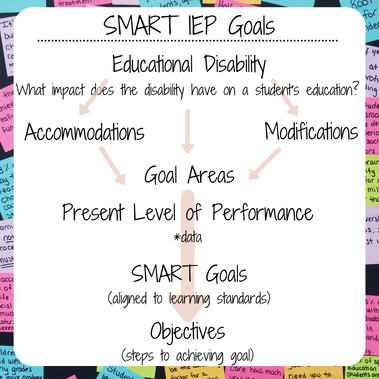



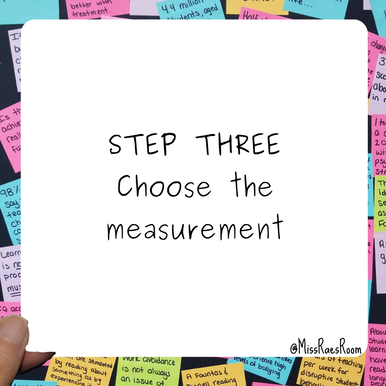
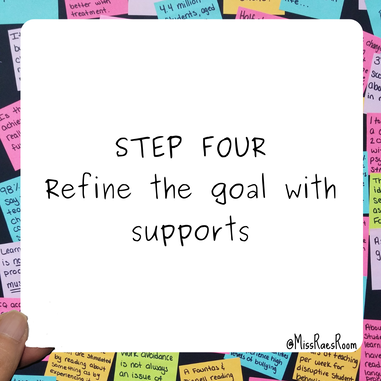
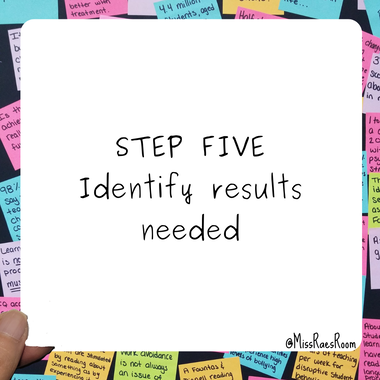


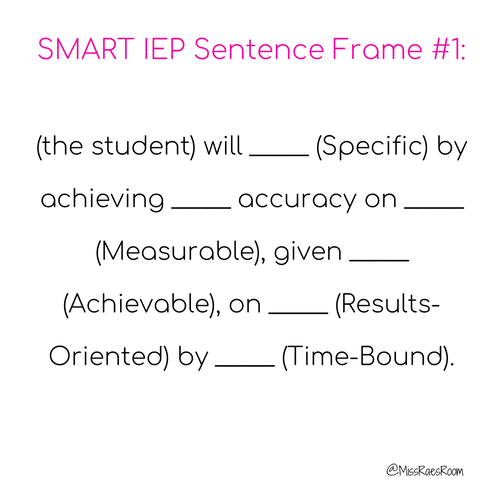

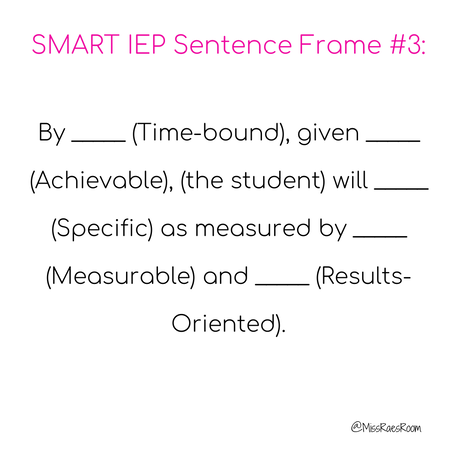








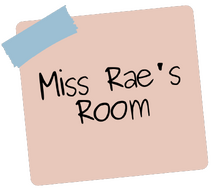
 RSS Feed
RSS Feed